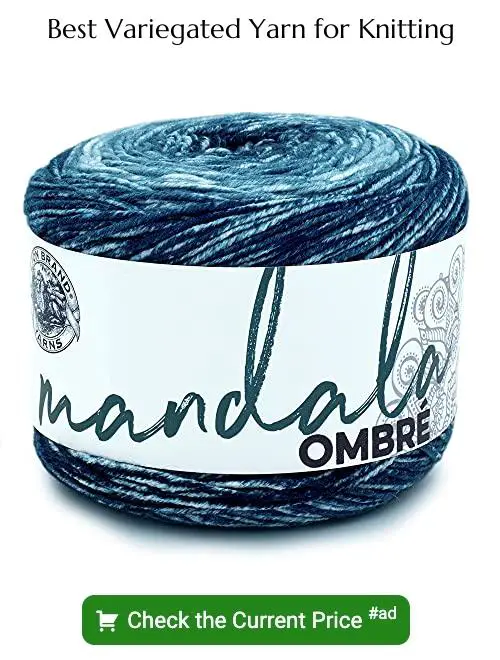Dive into this article because variegated yarn can add an exciting twist to your knitting or crocheting project, effortlessly creating intricate patterns as you work.
Variegated yarn, with its wonderful blend of colors, certainly adds an artistic touch to any yarn project. It stands out from solid color yarns due to its unique ability to create a myriad of effects in your work.
Whether it’s crochet, knitting, or any other yarn craft, the use of variegated yarn can make your projects aesthetically appealing and intriguing. In this article, we’ll delve into finding the perfect variegated yarn, understanding its characteristics, and how to use it effectively in your projects to achieve striking color patterns.
From selecting quality variegated yarn, to incorporating it in your design, this article will guide you every step of the way. Stay tuned for a detailed exploration of the exciting world of variegated yarn.
Key takeaways:
- Variegated yarn adds artistic touch and creates intricate patterns.
- There are three primary types of variegated yarn: gradient, self-striping, and speckled.
- Variegated yarn adds depth, uniqueness, and masks imperfections.
- Consider project size, color palette, and texture when choosing variegated yarn.
- Utilize color changes, simplicity, balance, swatching, and swatch test when working with variegated yarn.
Understanding Variegated Yarn
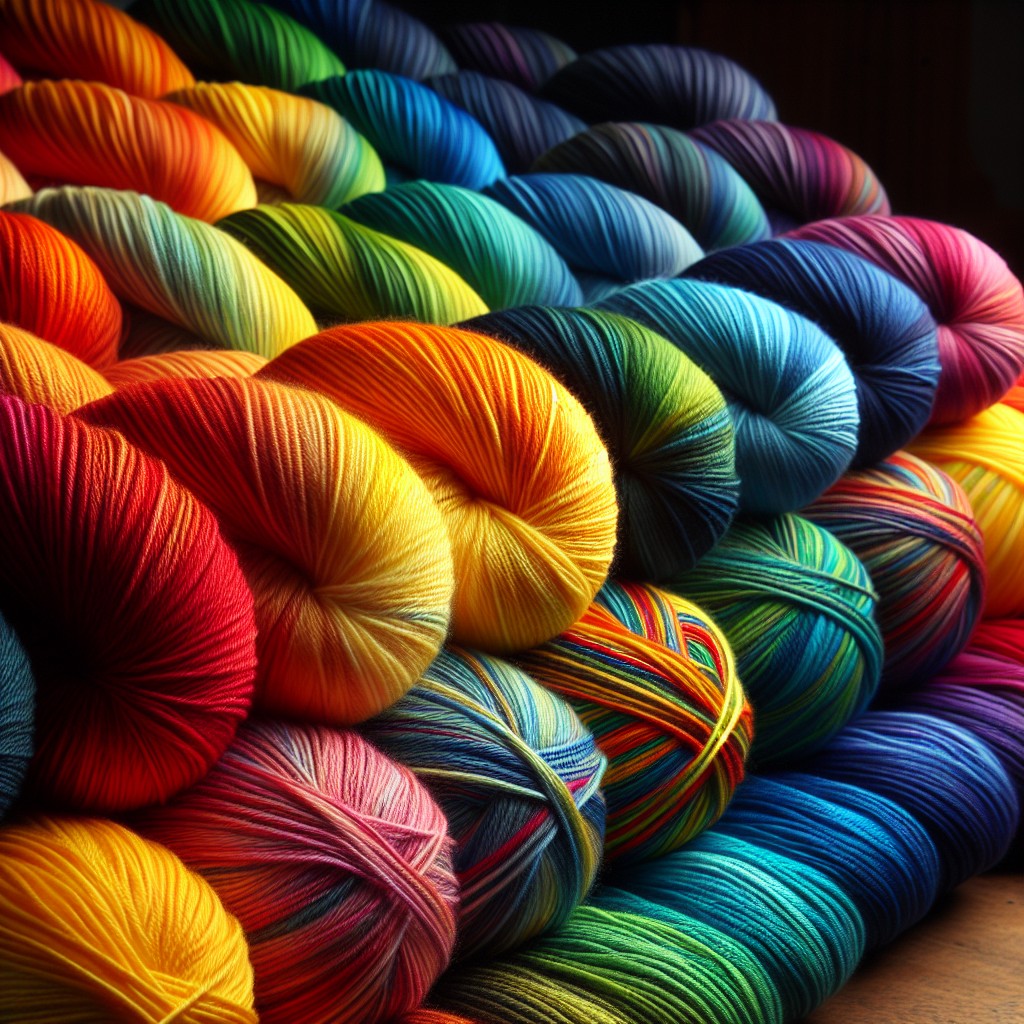
Primarily, variegated yarn is an exceptional type of yarn that consists of multiple colors dyed in specific sections along the thread’s length. When the artist knits or crochets with this yarn, it naturally creates color patterns, ranging from subtle, blended transitions to striking, contrasted stripes.
The multiple hues dyed into the yarn fall into two categories:
- 1. Multicolored: Containing three or more diverse shades, which may or may not be color coordinated.
- 2. Duo-shaded: Involves a pair of contrasting or complementary colors.
One intriguing trait is the irregularity of the color changes. Some variegated yarns may have long color sections perfect for larger projects like blankets or sweaters. In contrast, others may boast shorter sections more suited to compact tasks like socks or hats. This unique feature adds a new and exciting dimension to your yarn crafting enterprise.
Different Types of Variegated Yarn
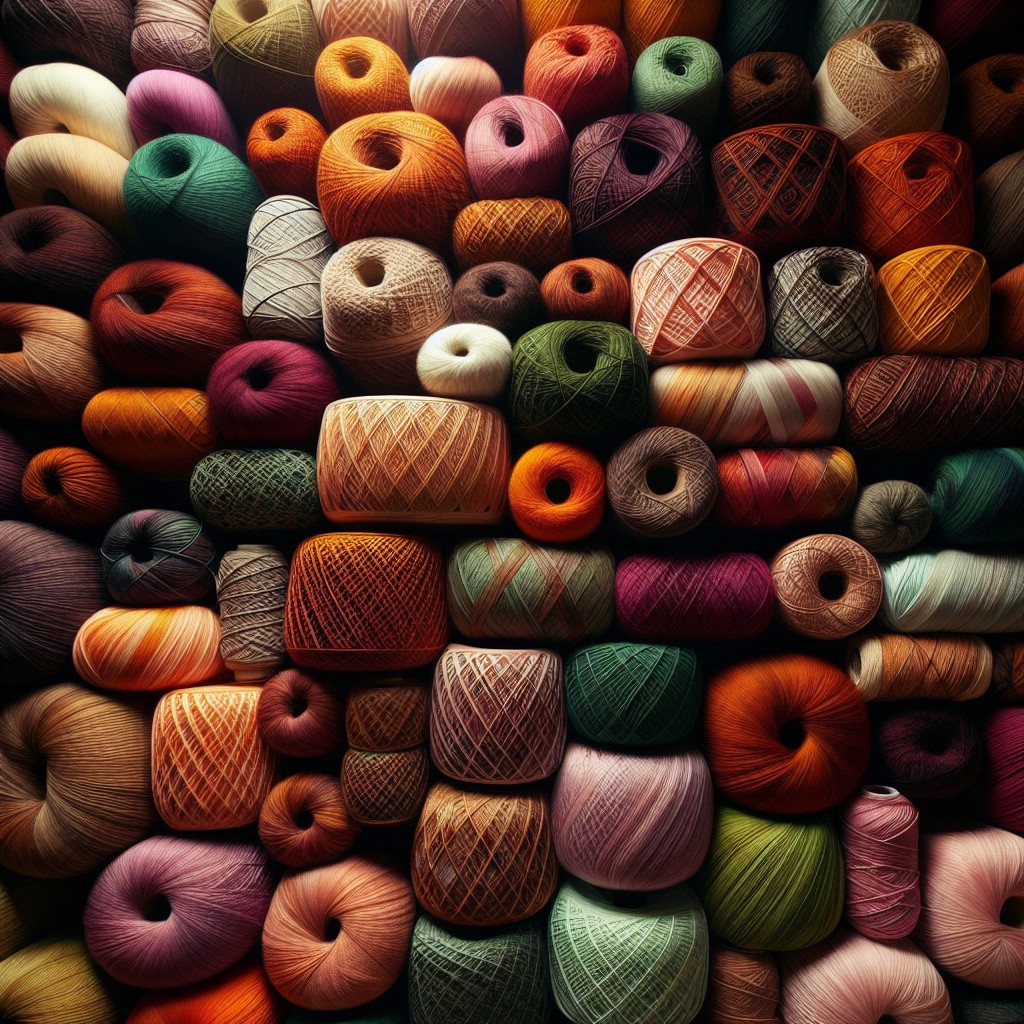
Delving into the assortment of variegated yarn, three primary types emerge: gradient, self-striping, and speckled.
Gradient yarn slowly transitions from one color to the next, often showcasing a beautiful ombre effect. It’s usually dyed in subtle shades that gradually shift, creating a smooth and seamless blending of hues.
Self-striping yarn is dyed in segments of different colors, distinctive from each other. Each stripe can vary in length, but it’s the variety of solid colors that distinguishes this type. It’s ideal for scarves, socks or any project where distinct, colorful patterns are desired.
Speckled yarn, the final variant in our yarn trio, sports random splashes of color against a single base hue. These specks or dots of colors bring a twist of surprise and whimsy to your crafts, adding character and dimension.
Remember, each type presents a unique aesthetic, so keep this in mind when sculpting your yarn masterpiece. The yarn chosen can dramatically alter the look and feel of your final piece.
Benefits of Variegated Yarn
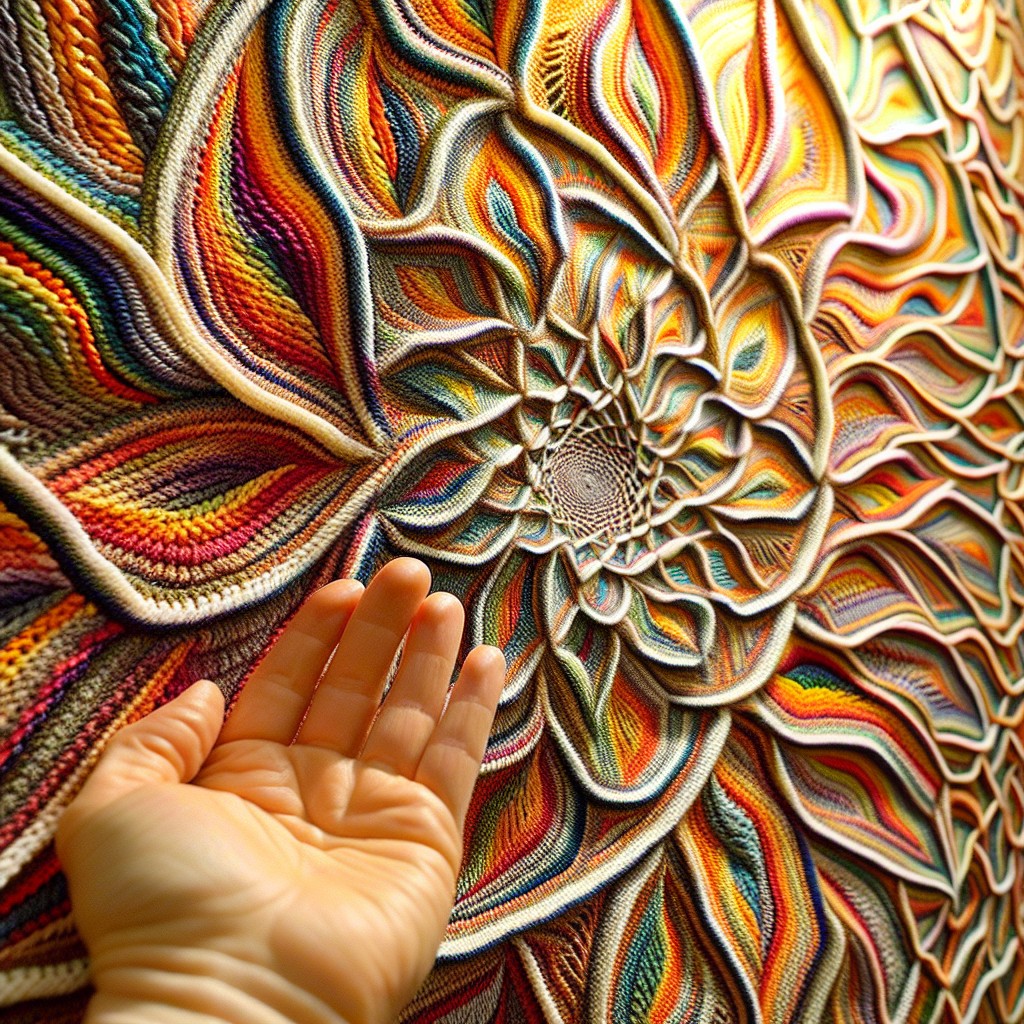
Variegated yarn adds a significant level of depth and visual interest to any yarn project. One of the key benefits is its ability to add multiple colorways with just one skein, simplifying colorwork. This brings in a lively variety, turning even the most basic patterns into vibrant artwork.
Another advantage is its unpredictable color patterns. This lends a unique, one-of-a-kind aspect to your items. No two pieces are identical, adding an element of surprise and uniqueness to your creations. This type of yarn also perfectly suits beginners seeking to create colorful pieces without needing to change threads frequently.
In addition to versatility in design, variegated yarn has a practical advantage: it masks minor imperfections more readily than solid colors. This feature is particularly useful for beginners or for complex patterns, in which an occasional error may go unnoticed due to the color changes.
Furthermore, it offers endless opportunities for creativity. You can experiment with the pooling of colors by modifying your stitch count or tension, offering endless possibilities for crafting an original piece. Unleashing your imagination is what really matters when working with variegated yarns.
How to Choose the Right Variegated Yarn
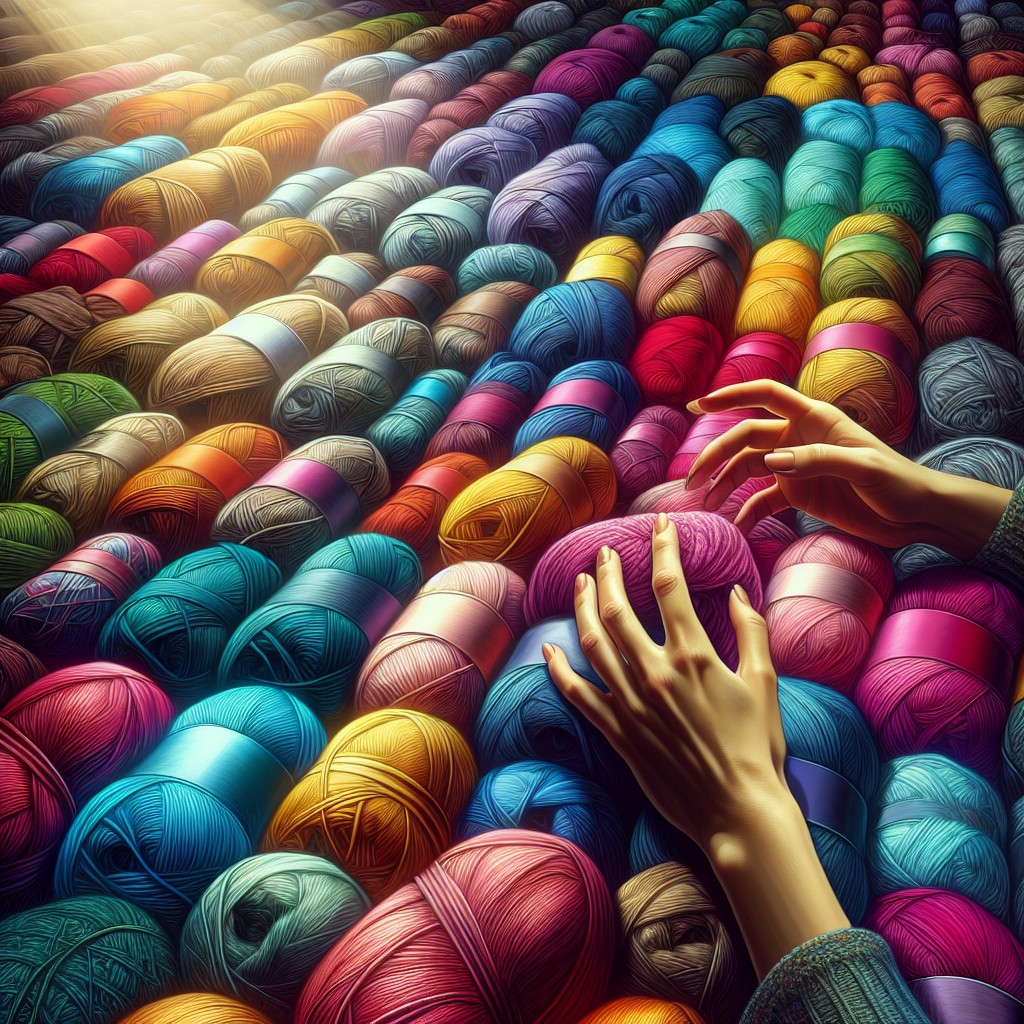
Before making a selection, consider the project at hand. Short color changes in variegated yarn work well for small projects, like socks or hats, whereas long color changes will be more effective in large items, such as afghans or scarfs.
Take note of the color palette. Ensure the colors harmonize not only with each other but also with your project.
Pay attention to dye lots, especially if you’re planning a large project that requires more than one skein. Differences in dye lots can result in unwanted color variations.
Also, check the yarn’s texture. Not all variegated yarns are smooth. Some have thick or thin sections which can add a unique texture to your projects.
Finally, remember the washing instructions. If you plan to make a wearable item, select a machine-washable yarn for easy care.
Guided by these factors, you can confidently select the right variegated yarn for your craft project.
Tips for Working With Variegated Yarn
It’s crucial to understand that variegated yarn can bring a unique charm to your craftwork, but some methods can enhance its impact further.
1. Mind the Color Changes: Pay attention to the color changes in your skein. Try to start each new row or round with a different color to ensure an eye-catching pattern.
2. Embrace Randomness: While some projects require specific color plans, variegated yarn is ideal for when you want to invite a little randomness into your work. The surprise element of the yarn turning colors can create an engaging, organic design.
3. Use Simplicity: A simpler stitch pattern is often the better choice for variegated yarns. It allows the colors to stand out without being overshadowed by intricate design details.
4. Balancing Act: Pair your variegated yarn with a solid color in your project. The balance can prevent the piece from becoming overly busy and provide some visual relief.
5. Swatch Test: Swatching will help to visualize how the colors in the yarn will play out over a wider area. It’s an invaluable stage in the crafting process.
Potential Challenges and Solutions of Using Variegated Yarn
One issue crafters may encounter is the ‘color pooling’ phenomenon, where colors cluster together forming unintentional patterns. To avoid this, consider alternating between two balls of yarn every few rows to break up the pooling.
Another challenge could be a lack of stitch definition. Variegated yarn, especially those with strong contrasts, might overshadow intricate stitch patterns. In such cases, simpler stitches could offer a better showcase for the yarn’s colors.
Additionally, uneven striping when creating larger pieces like blankets, can be a problem. To resolve this, try changing the length of your color repetitions by using a different size crochet hook or knitting needles.
Furthermore, sometimes the vibrant colors of such yarn might not suit every project. If this is a stumbling block, using it as an accent in conjunction with a complementary solid color could provide the solution.
Choosing Patterns for Variegated Yarn
Selecting the right pattern is crucial to showcasing the vibrant colors of your variegated yarn. Consider simple patterns as they allow the colors of the yarn to take center stage. Complicated patterns can sometimes hide the yarn’s beauty.
Big, open stitches and patterns that are small-scale are generally recommended. Examples of these include ribbing, lace, cables, and moss stitch. Patterns with short repeat sections are also ideal for making the most of the color changes.
Remember, symmetrical patterns may not always work well because they can break up the variegation. It’s always a good idea to do a quick swatch before you start your project to see how the colors play out with your chosen stitch.
Also, while variegated yarn can sometimes pool or flash, don’t discount these effects. Some crafters even intentionally create these effects for their unique visual appeal. The way the colors lay out in the finished product can be a delightful surprise.
How to Create a Color Pooling Effect
Getting the color pooling effect with variegated yarn can result in stunning designs and patterns. Here are some key pointers:
1. Identify the Color Sequence: Unravel a length of your yarn to understand the color changes. It will help predict how the hues will lay as you crochet or knit.
2. Gauge and Tension: It’s vital to maintain consistent tension, as changes can disrupt the color sequence. The same goes for your gauge – the number of stitches and rows per inch.
3. Stitch Selection: Some stitches work better with color pooling, like single crochet stitches in crochet and garter stitch in knitting. Experiment to see what works best with your chosen yarn.
4. Adjustments: Be adaptable and ready to add or subtract a stitch to maintain the color pooling pattern. It’s a process of constant adjustment to keep the color sequence intact.
5. Practice: Like any other skill, mastering color pooling takes practice. Be patient, keep experimenting, and you’ll gradually see improvement.
Remember, color pooling is both an art and a science. The complexities may seem daunting initially, but with time, they can turn into a fascinating part of your yarn crafting journey.
Incorporating Variegated Yarn in Different Projects
Whether it’s a crochet blanket, a pair of knitted socks, or a woven wall hanging, variegated yarn can add a unique touch. The multi-colored nature of the yarn allows for a broad spectrum of creative results. Here are some points to consider when incorporating variegated yarn into your projects:
1. Stitch Selection: Simple stitches often work best, as they let the colors shine without distraction. For knitting, consider garter stitch, stocking stitch, or rib. For crochet, try double crochet or single crochet.
2. Color Interaction: Pairing variegated yarn with a solid color can help highlight the beauty of the multicolored yarn. Choose a solid color that complements one of the shades in your variegated yarn.
3. Swatch First: Always advisable, especially with variegated yarn. This allows you to see how colors pool and whether you like the effect with your chosen stitch.
4. Think Small: Small projects like socks, hats, or scarves can often showcase variegated yarn the best. They allow for quick results and can handle busy colorways without being overwhelming.
Remember, the beauty of crafting with yarn is the freedom to experiment and truly make a project your own!
Caring for Items Made With Variegated Yarn
When maintaining your variegated yarn creations, it’s important to remember that proper care can ensure their beauty and longevity.
First, always consult the yarn label for washing instructions. Some yarns may be machine washable, while others will require hand washing. If in doubt, hand washing in cool water using a mild detergent is generally safe.
Remember to avoid wringing out the item. Instead, gently squeeze out excess water, wrap it in a towel and press to absorb moisture.
Lay the item flat to dry, keeping it away from direct sunlight to prevent color fading. Additionally, avoid ironing; the heat can damage the fibers.
Lastly, consider using a fabric softener or conditioner suitable for yarn during washing. This will help retain the texture and softness of the yarn whilst controlling frizz.
By following these care instructions, you can keep your variegated yarn creations in top condition for years to come.
FAQ
What does variegated mean in yarn?
Variegated yarn refers to yarn that is dyed with multiple colors, leading to diverse effects depending on the crafting technique, pattern used, and frequency of color change.
What is the difference between tonal and variegated yarn?
Tonal yarn features subtle color shifts where colors "melt" into each other, while variegated yarn displays more pronounced and distinct color changes, often resulting in specific pooling or stripes.
What is the difference between self-striping and variegated yarn?
Self-striping yarn automatically generates stripes in finished products, while variegated yarn provides a multi-colored effect without the distinct striping pattern.
What is the difference between ombre and variegated yarn?
Ombre yarn showcases a gradual color transition from light to dark of a single hue, while variegated yarn incorporates different colors varying in appearance.
What techniques are most effective when working with variegated yarn?
Strategic placement, simple stitch patterns, planned pooling, and combining with a solid color are effective techniques when working with variegated yarn.
How does the dyeing process create distinct patterns in variegated yarn?
The dyeing process creates distinct patterns in variegated yarn by applying multiple colors in specific sequences, which then distribute unevenly during the spinning process, resulting in a unique, multi-colored pattern.
Are there any limitations to the kinds of projects that can be successfully completed with variegated yarn?
While variegated yarn offers a dynamic visual effect and can be used in a variety of projects, its unique color changes can obscure or distort detailed stitch patterns, therefore it’s best suited for simple stitch designs.
